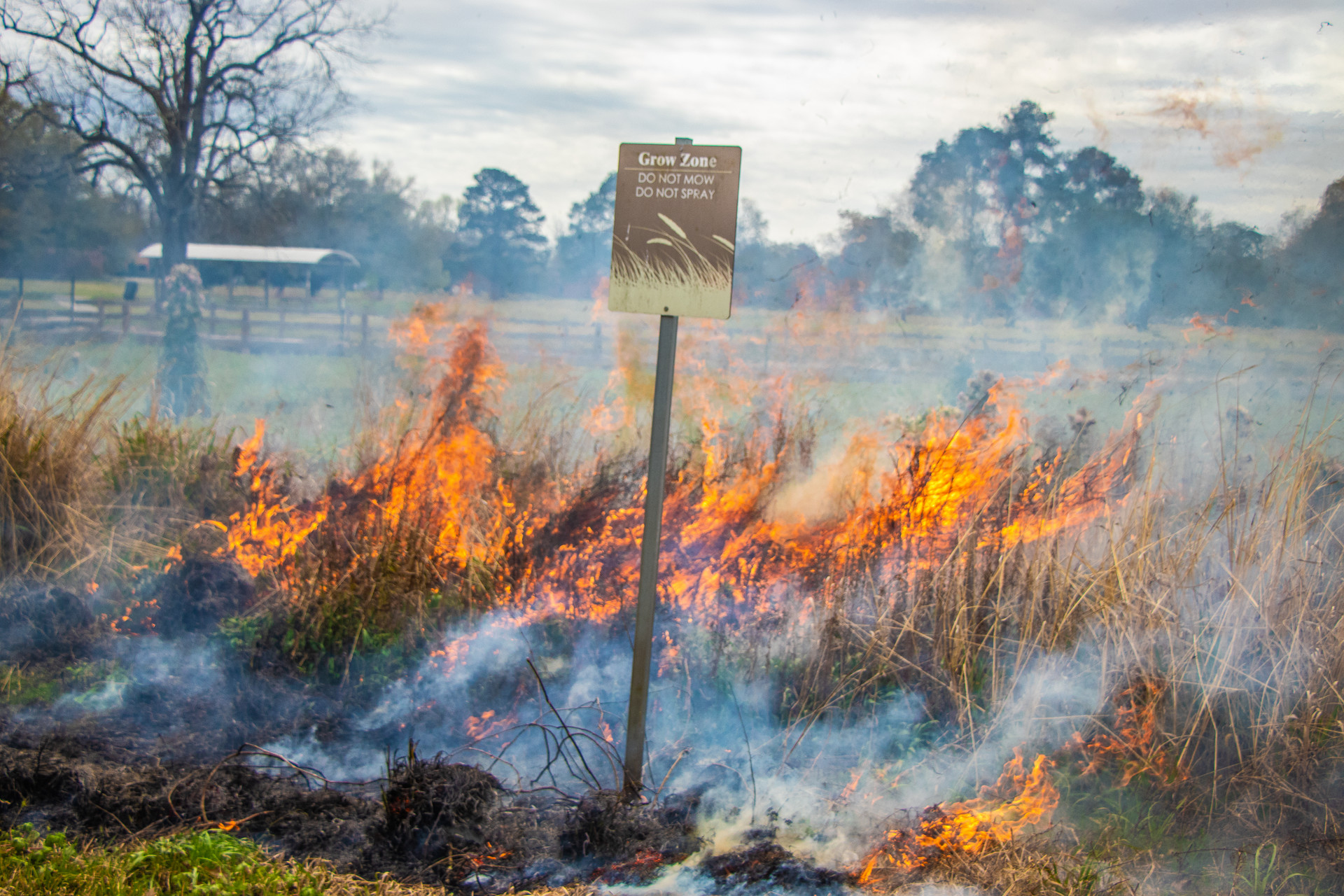
Prescribed Burns
What is a Prescribed Burn?

Prescribed burns are planned, controlled burns. They are started, monitored, and extinguished by a trained team of experts under specified weather conditions to restore health to ecosystems. The burn area within the park include “Grow Zones” of wildflowers and grasses that need fire to reproduce and be healthy. The grow zones contain mostly fine fuels (grasses) which will produce minimal flames and a thin smoke.
Is it Safe?
Local fire stations and Louisiana Department of Agriculture and Forestry are notified in advance of any prescribed burn. Weather conditions are monitored and if they are not perfect, the burn will be post-poned to a more desirable day. Precautions are put into place to prevent the fire from escaping such as fire guards (low plant material around burn areas that will not catch fire) and the fire crew has rakes, flappers and water to put out the fire as needed. This fire and associated smoke is not harmful and is a common management practice throughout the state.
What to Expect?
- Parks will planned burns will be closed for the entire day.
- The fire burns at low intensity while staff are onsite monitoring the entire time.
- Light smoke may be seen near the ground surface potentially up to a quarter mile from site the day of the burn.
- Light smoke may be seen dispersing in the sky visible up to 5 miles away during the burn.
- Traffic might be slower adjacent to the park where the burn is taking place.
- Charred ground will be visible for 2-6 weeks after the burn takes place within Grow Zones
- Beautiful spring growth and blooms will follow this spring.
Prescribed Fire is Good Fire
Like a doctor prepares prescriptions for patients, land managers often prescribe treatments, such as fire, to keep habitats healthy. Prescribed fire is a planned fire, also known as a “controlled burn.” They are carefully coordinated, taking into consideration the safety of the public, weather conditions and habitat objectives. Many native habitats, such as prairies, depend on fire to remain healthy and functional.
Benefits of Burning
Habitat
Fire returns nutrients to the soil creating healthy habitats while controlling some diseases, insects, and invasive plants that can affect habitat health. Periodic fire can improve water quality by increasing aquifer absorption.
Economic Gain
Grow Zones, such as the ones at Howell Community Park, alleviate maintenance expenses associated with mowing and staffing so that money can be spent elsewhere to better service the community!
Aesthetics
Prescribed fire increases the occurrence and visibility of wildfl owers, which attract pollinators, and maintains open spaces and transparency that improves the scenic quality of a grassland.
Wildlife Habitat Improvement
Prescribed fire can attract wildlife and songbirds by increasing plant diversity which also yields a variety of food. Fire allows plants to capture sunlight and grow.